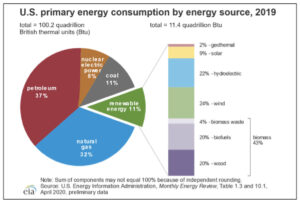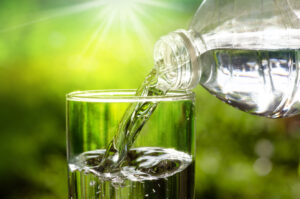US Nuclear Marks Beginning of Age of Space Mining as it Signs Historic Trade Agreement
US Nuclear Marks Beginning Of Age Of Space Mining As It Signs Historic Trade Agreement
 Los Angeles, CA. April 28, 2021 – On April 15, 2021, US Nuclear Corp. (OTCQB: UCLE) signed a historic trade agreement with Solar System Resources Corporation that marked the beginning of the age of space trade and mining. The new agreement sets preliminary prices for the high-value materials to be extracted. It also establishes and expands our cislunar and solar system value chain and adds SatRevolution as a new partner. The agreement is a continuation of the Letter of Intent signed on February 5, 2021, and outlines how US Nuclear and Solar Systems Resources Corp. plan to cooperate building a value chain starting with mining and selling valuable helium-3 and lanthanide metals and other materials from space deposits.
Los Angeles, CA. April 28, 2021 – On April 15, 2021, US Nuclear Corp. (OTCQB: UCLE) signed a historic trade agreement with Solar System Resources Corporation that marked the beginning of the age of space trade and mining. The new agreement sets preliminary prices for the high-value materials to be extracted. It also establishes and expands our cislunar and solar system value chain and adds SatRevolution as a new partner. The agreement is a continuation of the Letter of Intent signed on February 5, 2021, and outlines how US Nuclear and Solar Systems Resources Corp. plan to cooperate building a value chain starting with mining and selling valuable helium-3 and lanthanide metals and other materials from space deposits.
Solar Systems Resources Corporation Sp. z o. o. is a space mining company that conducts localization, in-situ verification, and mining of space resources. A third strategic partner, SatRevolution S.A., a leading provider of nanosatellites, is also participating in the construction of the value chain mentioned in the agreement. The deal, if completed in full, could be worth many hundreds of billions of dollars and will pave the way to a new frontier mining resources in space.
The agreement is in the form of a Memorandum of Understanding, and highlights include:
- Delivery of 500kg of extremely rare helium-3 isotope from space deposits in 2028-2032. The current market price of helium-3 is $16.6 billion per ton.
- Deliveries of helium-3 in subsequent years of 300kg (or more) per year.
- US Nuclear has received exclusive rights to use, sell, and resell helium-3 and the rare lanthanide metals in North America (including future Artemis Accords non-conflict zones in space), provided by Solar System Resources Corp. from space deposits.
- Solar System Resources Corp. received exclusive rights to use, sell, and resell space-related products and services developed by US Nuclear Corp (and current/future subsidiaries) in the European Union, Eastern Europe, Russia, and the Middle East, as well as sales made where both buyer and seller are on the Moon, on Mars or in space.
- The joint construction of the value chain has begun, starting from space resources to space infrastructure, transport, fusion energy and space propulsion, products and services, and ending with end-to-end business and individual customers on Earth and in space. To this end, the parties will actively seek and invite investors and business partners interested in creating and participating in such a value chain.
- In addition to stocking and selling appropriate high-tech products, the parties will carry out joint space mining missions, process and refine extracted materials, and supply other services related to space mining which will allow much higher margins than from the raw space resources alone.
- The parties will endeavor to support the US (and allies), the NATO military, and the development of the operational capabilities of the US Space Force.
- By 2050, the parties will endeavor to establish a network of space reserves available for civil operations, in particular, the US government/Space Force, including:
- Networks of power stations that store electricity and allow for quick charging of docking ships that have been granted access to the reserve.
- Liquified gases: O2, H2, CH4, technical gases.
- 500 tons of helium-3 isotope, which at the current Earth’s price of $16.6 billion / ton is $8,300 billion, or 39.65% of the US GDP in 2020.
- Metals critical to the US economy and security. Planned reserve value reaching up to 1% of US GDP.
- Water: the predicted value of the water reserve is 0.1% of the US GDP in 2020 ($ 20.93 trillion), which at a predicted (WGM Report) lunar water price of $0.5 million/ton, equals 41,865 m3 of water.
Perhaps it is surprising that the parties include regular water as a scarce and valuable trade good. However, it is predicted that spacers will be willing to pay high prices to vendors who can find, collect, and make deliveries of H2O.
In addition to water for drinking, water will be needed for industrial and chemical processes. Water is also useful as a source of deuterium as fuel for nuclear fusion power, and a source of hydrogen for fuel cells in many anticipated tools and equipment for space exploration.
The polish company SatRevolusion S.A. is already participating in the construction of the value chain mentioned in the contract as a third strategic partner. SatRevolution S.A. (http://satrevolution.com) is one of the most innovative companies in the field of small satellites, operates globally, has successfully deployed several nano-satellites, and is working on its own mega constellation of earth observation satellites called REC. The addition of SatRevolution S.A. to the value chain is only the beginning, and US Nuclear and Solar System Resources Corp. are also in talks with other partners from different continents and various industries.
Image Credit: NASA/Goddard/University of Arizona.
Safe Harbor Act
This press release includes “forward-looking statements” within the meaning of the safe harbor provisions of the United States Private Securities Litigation Reform Act of 1995. Actual results may differ from expectations, estimates, and projections and, consequently, you should not rely on these forward-looking statements as predictions of future events. Words such as “expect,” “estimate,” “project,” “budget,” “forecast,” “anticipate,” “intend,” “plan,” “may,” “will,” “could,” “should,” “believes,” “predicts,” “potential,” “continue,” and similar expressions are intended to identify such forward-looking statements. These forward-looking statements involve significant risks and uncertainties that could cause the actual results to differ materially from the expected results.
Investors may find additional information regarding US Nuclear Corp. at the SEC website at http://www.sec.gov, or the company’s website at http://www.usnuclearcorp.com
CONTACT:
US Nuclear Corp. (UCLE)
Robert I. Goldstein, President, CEO, and Chairman
Rachel Boulds, Chief Financial Officer
(818) 883 7043
Email: info@usnuclearcorp.com


 On March 11, 2011, a rare and powerful 9.0 magnitude earthquake was detected by the Fukushima Daiichi Nuclear Power Plant, which automatically shut down the reactor and started emergency diesel generators to power the pumps which would continue to cool down the fission reactor. Unfortunately, a 14 meter (46 ft) high tsunami arrived shortly afterward which swept easily over the seawall and flooded the plant and the emergency generators, causing the pumps and cooling to fail, leading to three nuclear meltdowns, three hydrogen explosions, and the release of radioactive contamination. In the decade since the disaster, cooling water has been leaking from the primary containment vessels into the basements of the reactor buildings, with new water being pumped into the reactors to cool the melted fuel. The cooling water is treated using an advanced filtration system to remove most all of the contaminants, but unfortunately, it cannot remove the tritium contamination, which is why the water has been stored in tanks.
On March 11, 2011, a rare and powerful 9.0 magnitude earthquake was detected by the Fukushima Daiichi Nuclear Power Plant, which automatically shut down the reactor and started emergency diesel generators to power the pumps which would continue to cool down the fission reactor. Unfortunately, a 14 meter (46 ft) high tsunami arrived shortly afterward which swept easily over the seawall and flooded the plant and the emergency generators, causing the pumps and cooling to fail, leading to three nuclear meltdowns, three hydrogen explosions, and the release of radioactive contamination. In the decade since the disaster, cooling water has been leaking from the primary containment vessels into the basements of the reactor buildings, with new water being pumped into the reactors to cool the melted fuel. The cooling water is treated using an advanced filtration system to remove most all of the contaminants, but unfortunately, it cannot remove the tritium contamination, which is why the water has been stored in tanks.
 Surface water from lakes, rivers, reservoirs, and groundwater is the primary source of drinking water in the United States. Typically drinking water is treated before moving into the municipal delivery system from which at least 80% of the U.S. population receives drinking water. Approximately 14% of the population relies on private groundwater wells, cisterns, and springs.
Surface water from lakes, rivers, reservoirs, and groundwater is the primary source of drinking water in the United States. Typically drinking water is treated before moving into the municipal delivery system from which at least 80% of the U.S. population receives drinking water. Approximately 14% of the population relies on private groundwater wells, cisterns, and springs. On February 18, 2021, NASA’s advanced Perseverance rover touched down on Mars and is now seeking evidence of native life on the red planet. Sooner than you think, human engineers and adventurers may be building the first town on Mars. While we have made great strides in robotics technology, the next step in the journey is sending humans to Mars. In order to send a crewed mission to Mars, NASA is focusing on nuclear electric or nuclear thermal propulsion systems for minimizing the time and fuel it takes to travel to Mars and back.
On February 18, 2021, NASA’s advanced Perseverance rover touched down on Mars and is now seeking evidence of native life on the red planet. Sooner than you think, human engineers and adventurers may be building the first town on Mars. While we have made great strides in robotics technology, the next step in the journey is sending humans to Mars. In order to send a crewed mission to Mars, NASA is focusing on nuclear electric or nuclear thermal propulsion systems for minimizing the time and fuel it takes to travel to Mars and back.